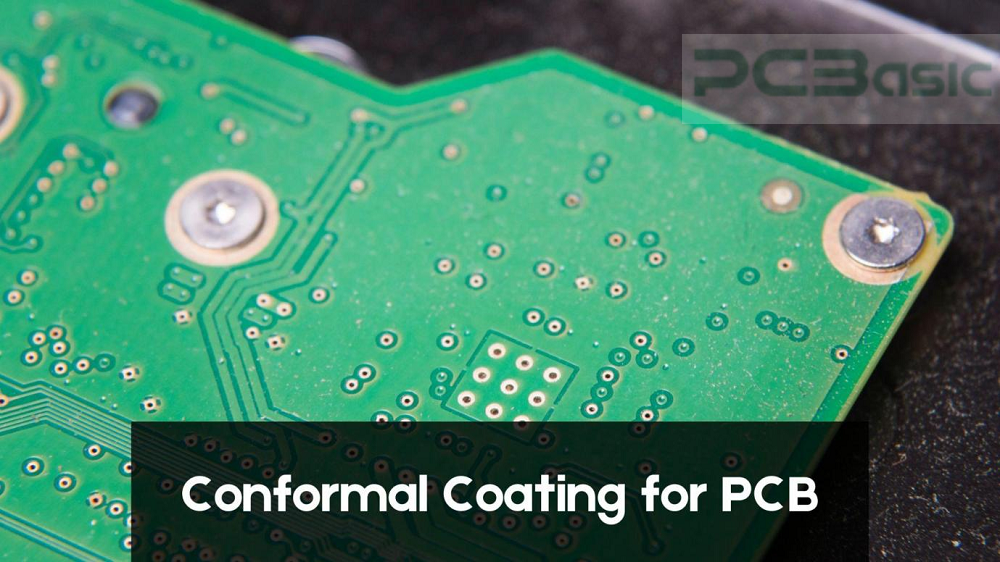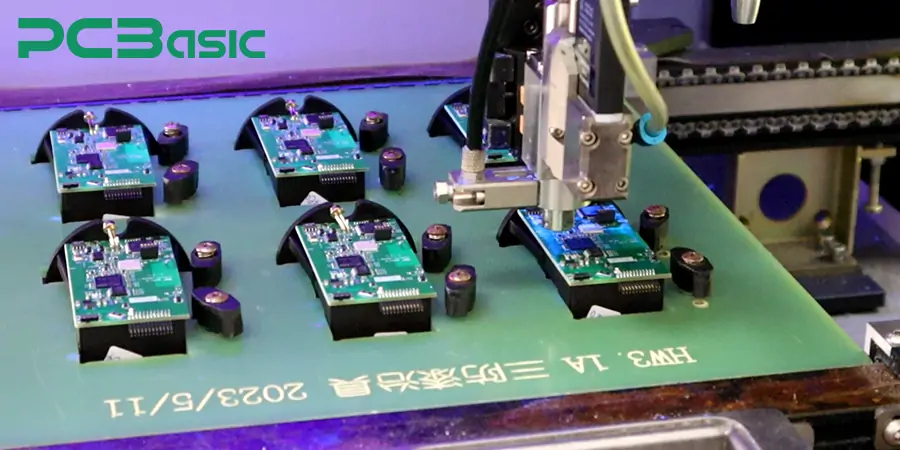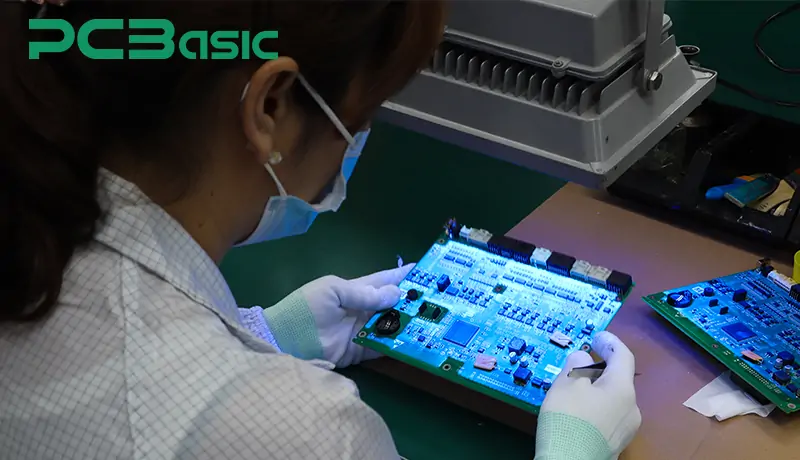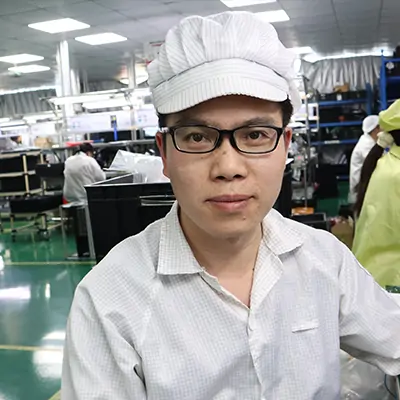Global high-mix volume high-speed Shenzhen PCBA manufacturer

Ru
9:00 -18:00, Mon. - Fri. (GMT+8)
9:00 -12:00, Sat. (GMT+8)
(Except Chinese public holidays)





Global high-mix volume high-speed Shenzhen PCBA manufacturer

Ru
9:00 -18:00, Mon. - Fri. (GMT+8)
9:00 -12:00, Sat. (GMT+8)
(Except Chinese public holidays)





HomePage > Blog > Knowledge Base > PCB Conformal Coating | A Comprehensive Guide to Its Types, Process and Benefits

One of the critical elements of electronics manufacture is environmental damage to printed circuit boards or PCBs. Conformal coating plays an extraordinary role in this process. It is a special coating applied to the surface of a PCB that protects the PCB from moisture, dust, chemicals, and extreme temperatures, which would otherwise damage the board. As technology advances, more companies want to manufacture their electronics under a PCB conformal coating service to become more durable and reliable.
The guide describes the nature of a conformal coating, its application processes, and how it can make all the difference for the products it's made for by holding a lengthy, helpful life. Various kinds of conformal coatings, methods applied to boards, and how they are done through methodologies in inspection and removal are covered in this guide. It helps make an informed decision about designing a new product or using conformal coating services.
The amount of protective covering applied as a thin layer onto the PCB protects sensitive electronic components from environmental factors, including humidity, chemicals, dust, and extreme temperatures. Conformal coating is essential in electronics for use conditions involving exposure of electronic devices to undesirable conditions, including automotive and aerospace or industrial applications.
On the other hand, a conformal coating literally "conforms" to the shape of the PCB, hence protecting all components without interfering with its electrical performance. This is different from potting or encapsulation, wherein a whole circuit is buried in a solid mass, for protection comes with conformity without interfering with accessibility for future repairs or modification.
There are thousands of types of conformal coatings. Each has properties unique to itself. Thus, there could be a selected coating based on the needs of the application, wherein temperature resistance, chemical exposure, and mechanical stress may just be a few examples.
Summarizations of the most common types of conformally coated PCBs:
|
PCB Coating Type |
Images |
Properties |
|
Acrylic Conformal Coatings
|
|
Acrylic-based coatings possess moisture tolerance, coating, and debonding ease, and, in general, good environmental resistance. They can be applied generally. |
|
Silicone Conformal Coating for PCB
|
|
Silicon-encapsulated types are relatively flexible and usable at somewhat higher temperatures. They also tend to be resistant to moisture as well as chemicals.
|
|
Polyurethane-Based Coatings
|
|
Polyurethane coatings are very abrasive and solvent-resistant. Therefore, such coatings are ideal wherever mechanical durability assumes prime importance. |
|
Epoxy Conformal Coatings |
|
Epoxy paints are highly resistant to chemicals and water but are too strong and hard to remove easily after application or quickly repair damaged parts.
|
|
Parylene-Based Coatings
|
|
Parylene coatings are advanced protective coatings having superior dielectric properties besides chemical resistance. This is because of the deposition through the vapor process. |
Of course, the type of coating has its application. The appropriate application will be based on the environmental requirements and the working action of electronics.
How to add conformal coating to PCB? Look at the following steps:
1. Clean and prepare
Before adding a protective coating to the PCB, it is necessary to clean the surface of the PCB and remove dust, oil and residue on the PCB. Only after cleaning can the protective coating be added, so that the conformal coating can firmly adhere to the PCB. In addition to cleaning the PCB, there are some preparations that need to be done: Use masking tape or special cover plates to protect areas that are not coated, such as connectors, switches, test points, etc.
2. Choose the right type of coating
There are mainly the following types of PCB three anti-paint coating:
|
Coating Type |
Key Characteristics |
Recommended Applications |
|
Acrylic Coatings |
Fast drying with excellent moisture resistance |
Ideal for general electronics requiring quick protection against humidity |
|
Silicone Coatings |
Suitable for high-temperature environments with strong flexibility |
Best for automotive, aerospace, and industrial applications exposed to extreme temperatures |
|
Urethane Coatings |
Outstanding chemical resistance; ideal for harsh industrial environments |
Commonly used in industrial equipment and environments with chemical exposure |
|
Epoxy Coatings |
Provides robust mechanical protection with strong chemical resistance |
Suitable for applications requiring durable protection against physical damage and chemicals |
3. Conformal coating techniques
There are three main methods of coating process:
Spraying method: Suitable for mass production to ensure uniform PCB surface coverage.
Brushing method: suitable for small batch or maintenance use.
Dip coating method: Double-sided coverage is completed by soaking the coating liquid, suitable for full protection.
4. Dry and cure
After adding a protective coating to the PCB, dry and cure the coating under appropriate conditions in accordance with the manufacturer's instructions to achieve the best results.
Different coatings take different time to dry and cure:
Acrylic Coating: surface drying takes about 10-30 minutes; It takes 24 hours to cure completely.
Silicone Coating: surface drying takes about 30-60 minutes; It takes 48-72 hours to cure completely.
Urethane Coating: surface drying takes 1-4 hours; It takes 24-48 hours to cure completely.
5. Check and test
After these processes are completed, it is necessary to check that the board is fully covered and ensure that there are no bubbles, missed coating or defects. You can also get a more intuitive understanding of conformal coating by watching this video:
https://studio.youtube.com/video/MYPW1dJ7Nx8/edit
Manual Brushing
Brushing is an application of a brush. They are applied in small jobs or spot coatings on particular sections. However, brushing is said to have film thicknesses that are not uniform and hence require much more dexterous handling, which disqualifies it from mass production.
Sprays

A conformal coating spray is applied to an even, uniform covering on the PCB. It is a pretty effective method in mass production and also gives uniform application. Although fast and reliable, masking needs to be carried out in sensitive areas, while equipment must be carefully calibrated to avoid overspraying.
Steep
Dipping deep means dipping the PCB completely into the coating so that coverage is ensured. It is ideal for complete encapsulation of the board, but some elements need masking. Dipping works excellent for simpler designs of PCB or large volumes, but too much coating may flood into tight spaces.
Vapor Deposition
It is a very effective process applied in vapor deposition to Parylene coatings because the inner surface of the vacuum chamber causes it to vaporize uniformly in a pattern that will allow skinny layers; however, it is costly and time-consuming, and therefore, it is the best suitable option for use with high-value products.
The curing process turns the applied coating to harden and dry up. In this process, it acquires complete protecting properties. When the applied coating is cured perfectly, then the coating bonds perfectly with the surface of the PCB. The type of method through which it is cured determines the applied requirements and the curvature of the coating.
It needs to be treated after use to allow eventual bonding and hardening.
1. Oven Cure Applied: The PCB is cured in the oven for some time at a set temperature so as to cure the coating. This is the most practiced process in epoxy and polyurethane coatings.
2. UV Curing: It is applied to apply UV-curable coatings. In it, the coated PCB is exposed to ultraviolet light, and material curing happens nearly instantly. It is a fast and effective process. Hence, it is more suitable for high-volume production.
3. Moisture Cure: Silicon-based coatings require moisture curing. They absorb the moisture supplied by the ambient air encircling them. They are slower compared to heat and UV curing but very useful when used in those coatings that should be flexible.
This is also significant since the conformal coating needs to be smooth and free of defects. Good inspection prevents many probably occurring defects like under coverage, which could expose the PCB to environmental damage.
UV Light Test

Most assemblages dope with a UV tracer, so all except the most esoteric can locate using UV light and rapidly locate areas that may have been missed or inconsistent, thus permitting rapid, non-destructive verification they are entirely coated.
Thickness Micrometer
Determine coat thickness. The thicker, the better. For the case in question, this can be carried out in micrometers or using eddy-current instruments. Only then will the quality of the coat remain if the prescribed needs are met when applying stringent needs for protection; the PCB is to be protected. A coat noticeably too thin may expose the PCB and thus easily cause it to change its functionality.
Observe Visible
The list above will add such things as bubbles, droplets-even coverage, etc., to visually depict other test processes before the last one in which all possible cosmetics and performance failure modes would be considered.
The conformal coating is undoubtedly very important for the circuit boards. Because in the manufacturing and assembly process of electronic equipment, adding conformal coatings to the circuit boards can extend the service life of the circuit boards.
Compared with the PCB without the conformal coating, the conformal coating PCB has the following advantages:
✅ Moisture protection: A PCB with conformal coating effectively prevents moisture intrusion and reduces the risk of short circuits.
✅ Chemical protection: effectively resist the corrosive chemical substances to the circuit damage.
✅ Dust and pollution prevention: Prevent dust, impurities and other pollutants from affecting PCB performance.
✅ Better high temperature resistance: effectively protect the circuit boards from extreme high or low temperatures.
✅ Higher reliability: prolongation of the service life of the conformal coating PCBs by reducing the risk of environmental damage.
For electronic equipment working in harsh environments, it is necessary to add conformal coatings to improve the durability and performance of electronic equipment. Therefore, the conformal coating for PCBs is necessary.
PCB conformal coating is widely used in electronic equipment with high environmental requirements. Here are some common application scenarios:
|
Application |
Environmental Challenges |
Role of Conformal Coating |
|
Automotive Electronics |
Vibration, dust, temperature fluctuations |
Ensures stable operation of automotive electronics in harsh conditions and extends product lifespan |
|
Aerospace and Defense |
Humidity, high-altitude pressure, temperature changes |
Protects electronic components from environmental factors, ensuring reliable operation |
|
Consumer Electronics |
Moisture, dust |
Enhances moisture and dust resistance, improving device stability and lifespan |
|
LED Lighting Systems |
Outdoor and humid environments |
Shields circuit boards from moisture and dust, ensuring stable LED illumination |
|
Industrial Control Systems |
Dust, chemical exposure |
Improves equipment reliability in harsh environments, reducing failure risks |
|
Marine Electronics |
Salt fog, humid conditions |
Prevents moisture damage to marine electronic devices, ensuring long-term stable operation |
Sometimes, it may be necessary to remove conformal coating for repair work, rework, or replace some parts on a printed circuit board. Removal thus requires proper choice without damaging the board or its components. The type of coating and specific requirements call for which method to apply in removal.
Captor Minimization
This contact stripping removes the coating from areas of interest in PCBs. A genuine solvent-based or mechanical scraper, along with laser ablation, has been used in the regions that require the removal of the coating. Only the point precisely in need will be influenced without changing the rest of the PCB as if it were new. That's handy when one specific component or area needs attention.
Complete Removal
In those cases, the conformal coating is stripped for complete rework or reconfiguration. It must be thorough for all those situations where chemical etch agents dissolve the coating or mechanical abrasion techniques for its physical removal. It is time-consuming and more cautious not to be adverse to the sensitive components. The two processes required proper handling and application of tools so the PCB would be prepared at a safe location for further processing.
Conformal coating is a critical process to protect PCBs from moisture and chemicals as well as extreme temperature conditions. This prevents the electronic components from being used over lesser periods with lower reliable life, especially for industries that are generally tough in their environment. Every stage, from the proper choice of type to the appropriate application and curing process, is paramount for performance excellence.
Knowing all kinds of conformal coatings and their applications is an essential requirement to make the right choice for protecting any particular need. Proper monitoring, along with effective removal methods, if required, will undoubtedly provide long-term effectiveness for the coating. Progress in electronics brings the inevitability of having conformal coatings, which are basically fundamental to maintaining the proper performance and safety of such delicate electronic systems.

Assembly Enquiry
Instant Quote